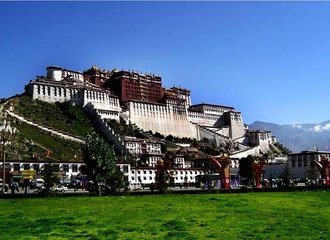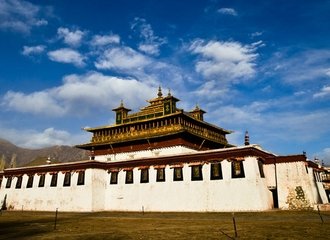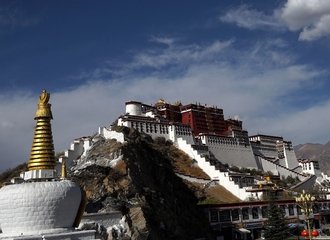Tibetan medicine
Tibetan, Chinese and Mongolian medicines are the three indispensable treasures in the Chinese medical system. Tibetan medicine has been veiled in mystery for a long time, but has recently gained worldwide popularity and acknowledgment.
Tibetan medicine integrates indigenous practices with the elements of other countries. In ancient times, native Tibetans living in the highlands had grasped original curative methods by using plants and animal tissues. The first prevailing practices of healing are phlebotomy, moxibustion and massage, which are still used today. In 4th century AD, many Indian medical texts were introduced to Tibet. During the 6th to 8th centuries, Princess Wencheng and Jincheng brought many medical texts and physicians from inner China to Tibet. Some of the texts were translated into Tibetan.
Around the 7th century, Yutok Yonten Kongpo (713-835), reputed as the Saint of Tibetan medicine, published the 'Four Part Medical Classic'. The growth and development of a human fetus was clearly recorded in the book. Yutok Yonten Kongpo collected folk prescriptions extensively and traveled to China, India and Nepal several times to seek medical knowledge. He invited renowned physicians to come to Tibet to exchange experiences and ideas. As a result, more than thirty pieces of treatises and thesis that integrated the pharmacology of China and other foreign countries were published. Since then, the 'Four Part Medical Classic' has been modified and edited continuously and has become the codex of Tibetan medicine.
The essence of Tibetan medicine is based about a dynamic balance of three vital elements: 'rLung', 'mkhris-pa' and 'bad-kan' (in Tibetan). Tibetans believe that the three elements provide energy and substance for human activities. 'RLung', like 'qi' in traditional Chinese medicine, is responsible for breathing and energy. 'Mkhris-pa' is responsible for digestion and thermoregulation. 'Bad-kan' is responsible for human temperament and constitution. The three elements are interrelated and supplement one another to create a harmonious balance within the body. Diseases result from a disturbance or blockage of this balance.
The diagnoses of patients follow that of Chinese methods by observing, questioning, urinalysis and pulse reading. Urine samples are observed for color, odor, floaters or sediments to determine the probable cause of illnesses. After the examination, prescriptions are written to restore any imbalance.
Herbs are used extensively in Tibetan medicine. Medicines for patients are compounded using anywhere from 20 to 100 herbs. Grown on an altitude of about 4,000 meters (13,123 feet), medical herbs are not subjected to pollution, keeping them pure. Tibetan medicine pays a great deal of attention to the selection, collection and processing of these herbs. The resulting medical materials take effect quickly and the effects are quite clear compared to other therapeutics.
Another distinct characteristic of Tibetan medicine is its close relation with Tibetan Buddhism. Many renowned physicians are Buddhists. Generally, the medical system is closely interwoven with religious practices. Institutes of Tibetan medicine are set up in some of the big monasteries.
More and more Tibetan hospitals have been set up around China in recent years. What's more, Tibetan medicine also gained great popularity among international medical professions. Experts, scholars and students from other countries come to Tibet every year for research and study. Tibetan medicine has been introduced to America, England and Germany. It is believed that Tibetan medicine will play a significant role in the near future and contribute greatly to the health of human beings.














